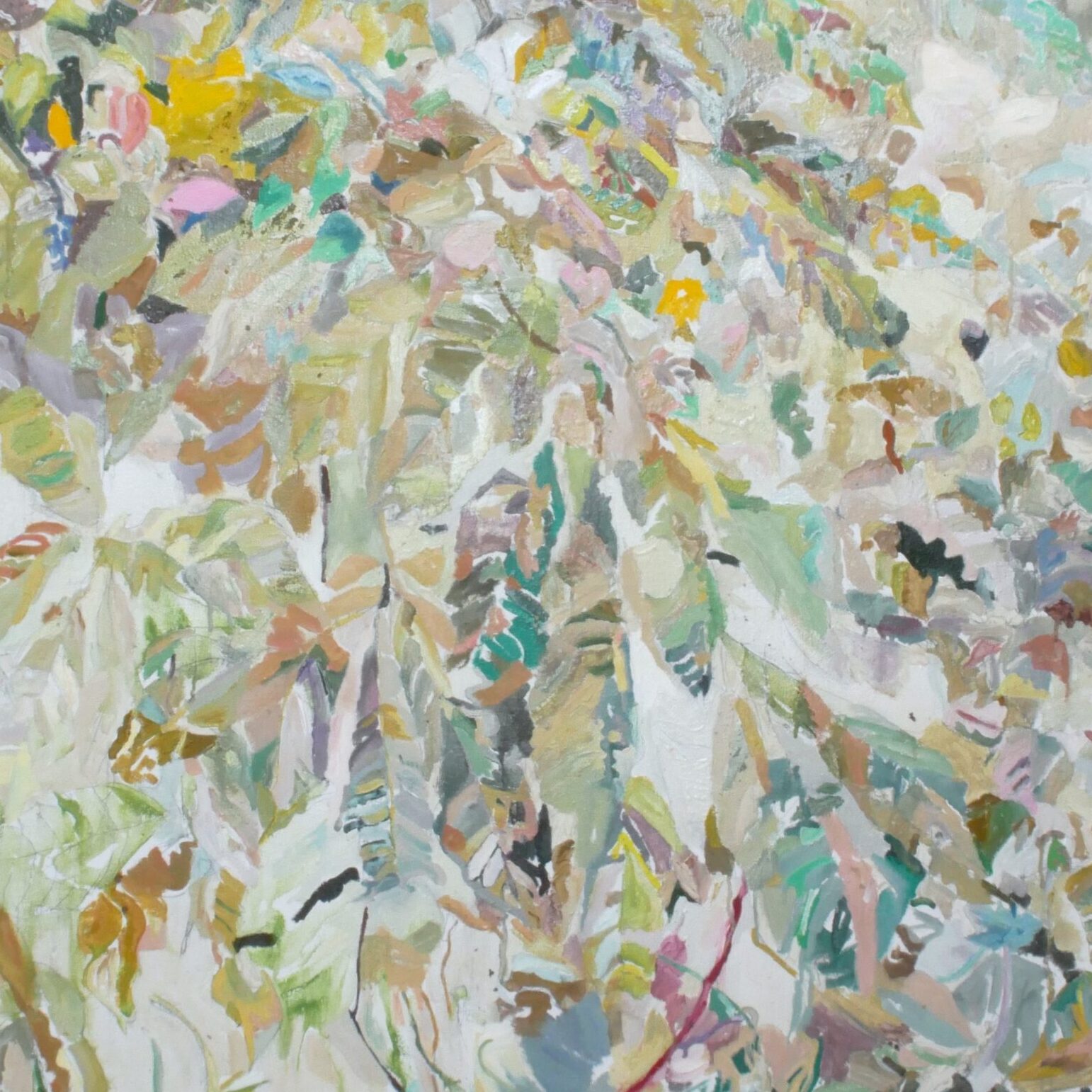Reynolds Gallery is pleased to announce the opening of Deepdene, a solo exhibition of paintings by Erika Huddleston. The exhibition opens on Friday, November 8, 2024 at our Main Street location with a public reception from 5 – 7 pm. The show runs through December 21.
For her first solo exhibition at Reynolds Gallery, Erika Huddleston presents Deepdene, a collection of oil paintings created onsite in Deepdene Park in Atlanta, Georgia. Huddleston’s paintings act as nature recordings, transcribing the flora of her selected outdoor surroundings. For this series of paintings, Huddleston spent weeks in different areas of Deepdeene Park working en plein air. Huddleston is deeply interested in the history and the landscape architecture of the parks in which
she paints and often incorporates actual elements from the park, such as leaves and twigs, onto her canvases. With loose brushstrokes, a rich color palette, and thick application of paint, Huddleston adds dimension and depth to her compositions, inviting the viewer into her observed scenery.
A word from the Artist
Deepdene Park is a 22 acre park in Atlanta, Georgia— one in a string of six green linear parks lining the parkway, Ponce de Leon. Designed by landscape architect, Frederick Law Olmsted in 1893 and his sons—the Olmsted Brothers in 1905– Deepdene Park’s terrain slopes steeply at the center to Lullwater Creek which functions as stormwater infrastructure and is a tributary of the Chattahoochee
River. The park, in the foothills of the Appalachian mountains, preserves a remnant of Atlanta’s Georgia Piedmont forest and one soaring tree, a white oak, predates the Revolutionary War. To stand in the park is to experience a dappled, fluttery deciduous woodland. Gradually, a palimpsest emerges: abandoned steel trolley tracks where a streetcar used to run to one side of the park, cobble bridges installed in the last decade to allow more circulation, soft mulch paths for running, copperhead snakes, dogs on leashes, hickories and tulip poplars, workout gear, and enormous gauzy spider webs. Twice, in the 70’s and 80’s, a new highway was proposed which would have cut through the linear park but which was fought off over a decade. Deepdene sits today, vibrating, in the middle of a metro of 6 million people. These oil paintings record ephemeral natural phenomena within Deepdene — painted onsite in different locations over hours and days.
Thank you so much to the Olmsted Linear Park Alliance, the Druid Hills Civic Association, and the Olmsted Network. Deepdene Park is an Olmsted park and I’ve also investigated two others: in 2018, Central Park in NYC—specifically the Ramble—and in 2023, Jemison Park in Birmingham, Alabama.
About the Artist
Erika Huddleston lives and works in Dallas, Texas and received a BA in Fine Arts from Vanderbilt University and a Masters in Landscape Architecture from the University of Texas at Austin. She is a contributor to Aether Art Journal and Texas Architect Magazine—writing about the connections of urban design and craftsmanship and public art. She was the Artist-in-Residence with the non-profit
Shoal Creek Conservancy in Austin in 2014, and in 2017, her oil paintings and original maps of Waco Creek were shown at the Mayborn Museum at Baylor University with the Art Center of Waco. She has painted major bodies of work onsite in public parks: along Waco Creek in Waco, Texas, Shoal Creek in Austin, Texas, the Trinity River in Dallas, Texas, the Ramble in Central Park in New York City in 2019; and she was invited to paint and exhibit a series of paintings recording the restored Blackland Prairie behind the Botanical Research Institute of Texas [BRIT] in Ft Worth in Fall 2021. Texas Monthly in Spring 2017 named her as part of their list of the “Top Ten Texas Artists to Collect Now”, and she was selected as a 2015 Hunting Prize finalist. Erika’s oil paintings record at 1:1 scale in “urban wilderness” locations the temporal natural phenomena that are not easily documented with typical landscape data-collection tactics. “I paint to record what cannot be seen on a static map and which is fleeting and hard to document, but which exists.”













